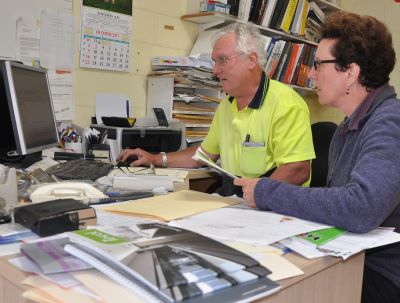WHS management systems

All good businesses recognise that a safe workplace is essential to their success and long-term survival.
However, there is more to an effective WHS system than just having various policies and procedures dealing with different issues around the workplace.
For the system to be truly efficient and fully compliant with WHS legislation, it needs to be integrated into all of the company’s activities, and managed in a systematic way.
This is where a WHS management system (WHSMS) comes into play. A WHSMS is the overarching system that coordinates all of the safety policies and procedures in the company, and allows management to monitor the performance of the different elements.
It also provides the company with a means for documenting its efforts in dealing with WHS issues. This not only helps it to satisfy workers compensation and other WHS legislation, it also gives the company a sound picture of how well everything is working, which helps management to make good quality decisions about the future.
A WHSMS includes all of the steps taken to ensure that the company provides its employees with a safe place to work. This includes the training programs delivered, safety procedures implemented, audits and inspections carried out, new equipment purchased, existing equipment upgraded, reviews undertaken, and so on.
Below are the names and descriptions of typical documents that a company might keep in its WHSMS:
Registers and log books
Injuries Register: recording all workplace injuries sustained by employees
Lifting Gear Register: listing all slings, chains and other lifting gear used on site
Hazardous Substances Register: listing all hazardous substances kept on site
Plant and Equipment Register: showing the servicing and maintenance schedule for all machines
Safety Hazard Log: used by employees to record potential safety hazards
Workplace safety inspections
Site Inspection Checklist: used at regular intervals to identify hazards around the site
Forklift Pre-start Inspection Checklist: completed by the forklift driver each day
Delivery Truck Pre-start Inspection Checklist: completed by the truck driver each day
Minutes of meetings
Toolbox Minutes: recorded by the supervisor at the regular Toolbox meetings
Safety Committee Minutes: recorded by the secretary at the regular safety committee meetings
Training documents
Training needs analysis: showing the areas where training is needed
Training Skills Matrix: showing the current skills and proposed training for each employee
Assessment instruments: completed by workplace assessor to verify the competency of employees
SOPs and SDSs
Safe Operating Procedures: showing the safe operating procedures for workplace machines and processes
Safety Data Sheets: showing the properties and correct handling procedures for all hazardous substances kept on site
Risk assessments and reports
Incident Report: completed after an incident involving property damage or injury
Risk Management Assessment: completed by the Safety Committee
New Equipment Risk Assessment: completed prior to commissioning a new machine
Safe Work Method Statements: completed by subcontractors or other staff involved in installations or other forms of new work
Return to Work documents
Return to Work Plan: for injured workers returning to work on ‘suitable duties’
Forms
Contractor Insurance Form: completed by contractors prior to carrying out work
Hot Work Permit: completed by tradespersons before undertaking hot works, such as welding
Workers Compensation Claim Form: completed by injured workers when lodging workers compensation claims
WorkSafe Accident Report Form: for reporting serious accidents or incidents
Safety induction manuals
Induction Manual for Employees: issued to new employees at the commencement of their employment
Induction Manual for subcontractors: issued to contract tradespersons who come on-site
Policies and procedures manuals
WHSMS Policies and Procedures Manual: setting out the company’s Work Health and Safety Management System Policies and Procedures
Emergency Procedures Manual: setting out the procedures for dealing with emergencies